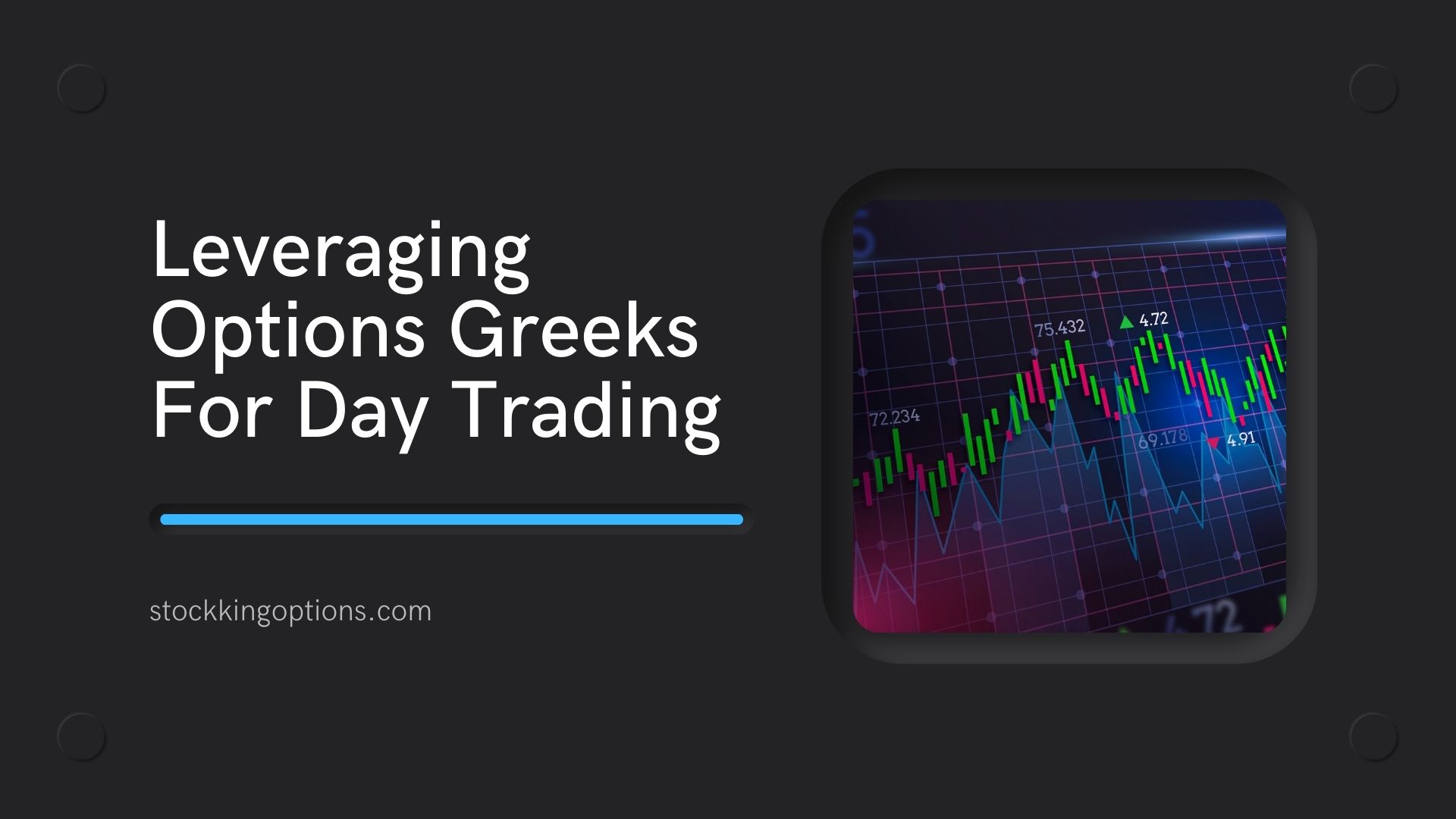
Key Takeaway: Understanding and utilizing stock options Greeks can significantly enhance options day trading strategies. Delta, gamma, theta, and vega help traders assess risk and maximize profit potential.
In day trading options, leveraging options Greeks is essential. Can options Greeks improve day trading options strategies? Absolutely. By understanding and utilizing delta, gamma, theta, and vega, traders can better assess risk and maximize profit potential in their trades.
Understanding Delta, Gamma, Theta, And Vega
Understanding Delta, Gamma, Theta, and Vega are crucial for day traders to effectively leverage options trading. These four metrics, also known as the “The Greeks”, provide valuable insight into the behavior of option prices. They help traders make informed decisions about which options to buy or sell based on market conditions and risk management strategies.
Delta measures the change in an option’s price relative to a $1 movement in the underlying asset. It ranges from 0 to 1 for call options and -1 to 0 for put options. A delta of 0.5 means that for every $1 increase in the underlying asset, the option price will increase by $0.50. This metric is important because it reflects how closely an option follows the movements of the underlying asset. Options with high deltas are more sensitive to changes in stock price and have higher risk-reward potential.
Gamma represents how much an option’s delta changes when there is a $1 move in the underlying asset. It provides insight into how quickly an option’s price will change in response to changes in stock price. A high gamma indicates that an option’s delta can change significantly with small movements in stock price, making it riskier but also potentially more profitable.
Theta measures the daily time decay of an option’s value as its expiration date approaches. It reflects how much value an option loses each day due to time passing without any major changes in stock price or volatility levels. As expiration nears, theta increases exponentially leading up until expiration day when it reaches its maximum value (for at-the-money options). Day traders should be aware of theta decay when choosing short-term options contracts as it can erode profits quickly if not monitored closely.
Vega represents an option’s sensitivity to changes in implied volatility levels. Implied volatility is a measure of investor expectations for future market fluctuations and plays a significant role in determining options prices. A high vega means that even small changes in implied volatility can have a big impact on an option’s price. Traders should keep an eye on vega when trading options during events or news announcements that could significantly affect market volatility.
Understanding Delta, Gamma, Theta, and Vega is crucial for day traders to make informed decisions about their options trades. These metrics provide valuable insights into the behavior of option prices and help traders manage risk effectively. By analyzing these Greeks, traders can gain a better understanding of how options contracts work and improve their chances of success in the highly volatile world of day trading.
Using Options Greeks To Forecast Price Movements
When it comes to day trading, having a deep understanding of options Greeks can be extremely beneficial. These measures, also known as risk parameters, are used to determine how an option contract will perform in relation to changes in certain variables such as price, time, volatility and interest rates.
One of the most popular ways to utilize options Greeks for day trading is by using them to forecast price movements. This involves analyzing the values of different options Greeks and their relationships with each other in order to make predictions about the direction and magnitude of future price changes.
The first and perhaps most well-known options Greek is delta. Delta measures the rate at which an option’s price changes in relation to a $1 movement in the underlying asset’s price. For example, if a call option has a delta of 0.50, that means for every $1 increase in the underlying stock’s price, the call option’s value will increase by $0.50.
Delta can be particularly useful for forecasting short-term price movements as it gives traders an idea of how much an option’s value will change based on changes in the underlying asset’s price. A higher delta indicates a stronger correlation between the option’s value and the stock’s movement, making it more attractive for day trading.
Another important options Greek is gamma. Gamma measures how much an option’s delta will change with every $1 move in the underlying asset’s price. It essentially shows how sensitive an option is to changes in its underlying asset’s volatility.
Gamma is especially useful when trading volatile stocks or during periods of high market uncertainty. As volatility increases, so does gamma – meaning that there may be larger potential profits (or losses) from small changes in stock prices.
Theta is another key options Greek that plays a crucial role in forecasting short-term price movements. Theta measures how much an option’s value decreases over time due to decay or erosion caused by passing time until expiration.
For day traders, theta can be both an advantage and a disadvantage. On one hand, selling options with high theta can result in quicker profits as time decay works in your favor. On the other hand, buying options with high theta means that they will lose value faster over time, so traders need to carefully consider their entry and exit points.
Understanding how different options Greeks work together and impact each other is essential for effectively predicting price movements in day trading. By closely monitoring delta, gamma, and theta, traders can gain valuable insights into potential price changes and make more informed trading decisions.
Hedging And Adjusting Options Positions Based On Greeks
Hedging and adjusting options positions based on Greeks is an important aspect of using options for day trading. The Greeks, also known as option sensitivities, are a set of mathematical formulas that help traders understand how an option’s price will be affected by changes in different factors such as time, volatility, and the underlying asset’s price.
The most commonly used Greeks are Delta, Gamma, Theta, Vega, and Rho. Each of these measures a specific type of risk or sensitivity associated with an option contract. Understanding these Greeks can help traders make more informed decisions when it comes to entering and exiting options positions.
Delta measures the change in an option’s price in relation to a $1 change in the underlying asset’s price. A delta value of 0.5 means that for every $1 increase in the underlying asset’s price, the option will increase by $0.5. This information is crucial for hedging strategies where traders may want to offset potential losses from their options position with gains from the underlying asset.
Gamma measures how much Delta will change based on a $1 change in the underlying asset’s price. It essentially shows how sensitive Delta is to changes in the underlying asset’s price. A higher gamma means that Delta can change significantly with even small movements in the underlying asset’s price. This knowledge can be helpful when making adjustments to existing positions or managing risk.
Theta represents the time decay of an option contract. It measures how much value an option loses each day due to time passing by without any movement in the underlying asset’s price. As expiration approaches, Theta increases exponentially, which means that options traders need to manage this risk carefully and make necessary adjustments to their positions.
Vega measures an option contract’s sensitivity to changes in implied volatility levels. Implied volatility refers to market expectations about future volatility levels based on current pricing trends. Higher Vega values indicate that there is more uncertainty about future prices, while lower values indicate a more stable market. Traders can use this information to adjust their positions accordingly.
Rho measures an option’s sensitivity to changes in interest rates. While not as significant as the other Greeks, it is still essential to keep an eye on Rho and make necessary adjustments when needed.
Understanding and monitoring the Greeks can help options traders make more informed decisions about hedging and adjusting their positions for day trading. By keeping track of these sensitivities, traders can effectively manage risk and optimize their strategies for maximum profitability.




